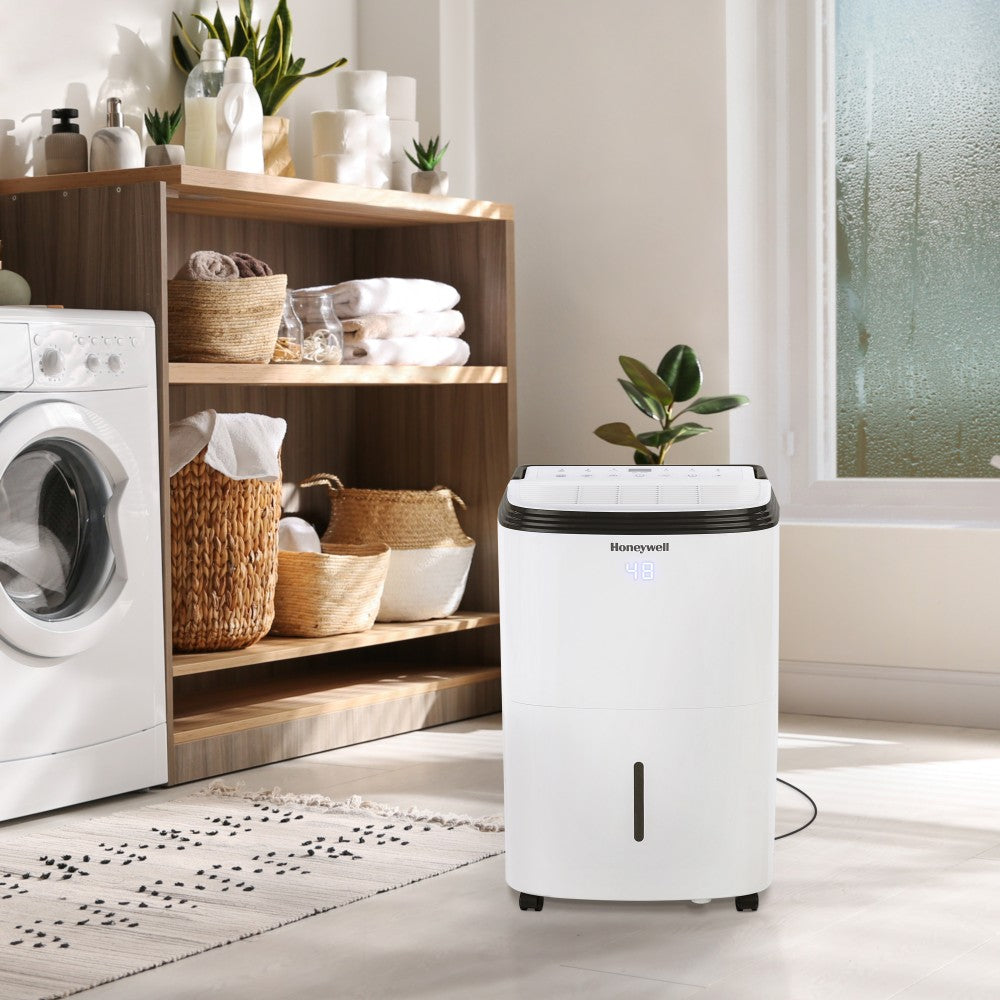
Dehumidifier Benefits, Cleaning, and Maintenance
Portable dehumidifiers are simple, yet powerful home appliances that are crucial for controlling moisture in basements, crawl spaces, bathrooms, laundry rooms, and basically any room in your home if you live in a high humidity environment. Without a functioning dehumidifier, the level of moisture in the air can become extremely high, leading to mold, mildew, and discomfort, and can even damage home structure and furnishings. A lack of proper dehumidification can also lead to an increase in unwanted pests, allergens, and bugs.
However, since dehumidifiers trap moisture, it also makes them perfect places for mold and mildew to grow. Most manufacturers recommend cleaning your dehumidifier once a month, especially during busy seasons. Regular cleaning also means a more efficient dehumidifier that will be able to remove moisture from the air faster and more efficiently. So here’s our step-by-step guide on how to clean and maintain your dehumidifier:
Step 1: Clean the intake and exhaust grilles
There are several intake and exhaust grilles on the outer plastic shell of your dehumidifier that collect dust and debris. When they are not cleaned, they can cause blockages and reduce dehumidifier performance. Cleaning intake and exhaust grilles is easy: simply vacuum them using a vacuum brush attachment, and you should be good to go. While you’re at it, you might also want to clean the outer plastic shell with a damp cloth.
Step 2: Empty the water collection tank
Your dehumidifier has a water collection tank at the bottom. If not cleaned properly, mold often forms on the inside of the tank, which is easy to notice because of its distinct musty smell. You can prevent this from happening by detaching the water collection tank from the unit, emptying it, and then cleaning it thoroughly with an antibacterial microfiber cloth like this one.

If you notice that mold has already developed inside the tank, you need to kill it using an antibacterial solution to prevent it from becoming airborne and spreading to other areas of your home. Virtually any antibacterial cleaner, including Clorox, will work just fine. Just make sure to let it sit in the tank for a while before you empty it. Visit this website to learn more about how to remove mold from a dehumidifier water collection tank.
Step 3: Clean the air filter
Consult the dehumidifier instruction manual to find how to access the air filter. Remove it from the dehumidifier and check its condition. Unless the air filter is very old, cleaning it in a solution of warm water and bleach using a soft brush should be sufficient to restore it to its original condition. Air filters are an essential component of dehumidifiers, and as such, they should be checked regularly to be kept in good working order. If you keep your dehumidifier running all the time, you should clean the air filter once every two or three weeks, especially if your environment is particularly dusty.
If you need to replace your filter, they're easily available at different sellers, including in the Parts & Accessories section of Sylvane.com.
Maintaining Your Dehumidifier
- Place your dehumidifier at least 6 inches from all walls to ensure that the air intake and exhaust are not blocked.
- The temperature of the room or area being dehumidified should be at least 65°F so it doesn't freeze up or burn up the motor (unless the dehumidifier is specifically designed for lower temperatures).
- The dehumidifier’s air filter is designed to trap dust and allergens to protect the appliance’s insides as well as to improve the quality of the air in the room. Ensure that you follow the owner’s manual to clean or replace air filters so you can ensure the appliance’s best performance.
- The humidistat is what controls the humidity level in the room. The ideal humidity level to set for optimal comfort and efficiency is typically between 40-50%.
-
If the temperature in the room with your dehumidifier often falls below 60°F (15°C), ice may develop on the coils inside your unit. When this happens, you need to defrost your dehumidifier and stop it from freezing up in the future. To learn how, read this article.


